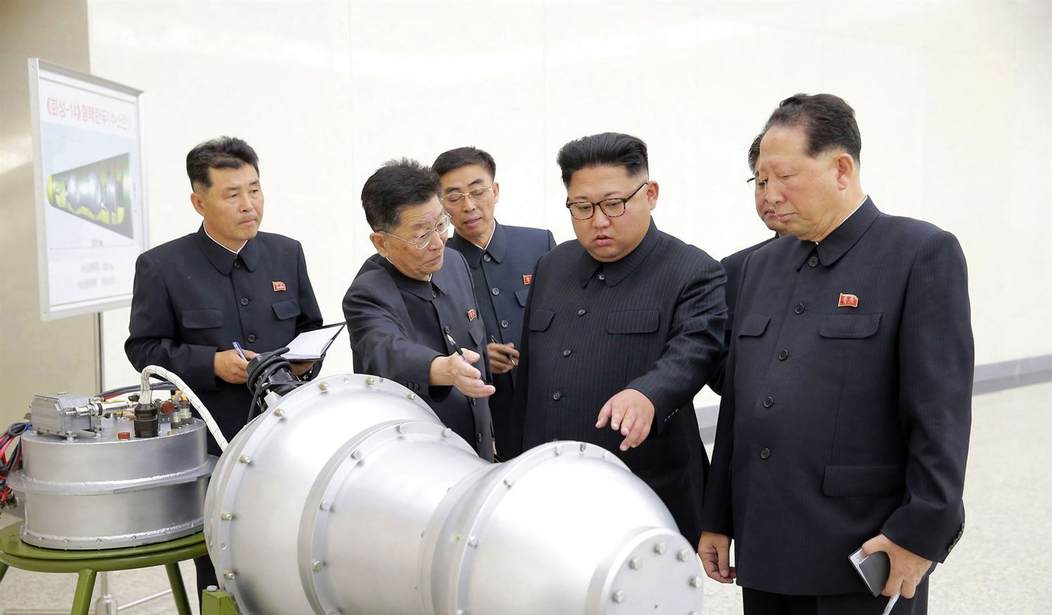Yesterday, we discussed the increased level of saber-rattling by joint American and South Korean military forces on the Korean Peninsula. I was questioning just how much we want to be provoking North Korea’s unhinged dictator at the same time that we’re staring at possible military action with Russia and/or China. It turns out that the Biden administration already knew the answer to that question. The White House clearly plans to provoke Kim Jong-un to a significant degree. Less than a day after firing eight long-range missiles into the ocean in response to Kim doing the same, a joint sortie of 20 American and South Korean fighter jets was sent out over the sea on the western coast of the peninsula. Just in case that wasn’t a clear enough signal, a U.S. Deputy Secretary of State was dispatched to Seoul to announce that there would be a “swift and forceful response” if Kim detonates another nuclear test blast as intelligence agencies expect him to do quite soon.
The South Korean and U.S. militaries flew 20 fighter jets over South Korea’s western sea Tuesday in a continued show of force as a senior U.S. official warned of a forceful response if North Korea goes ahead with its first nuclear test explosion in nearly five years.
South Korea’s Joint Chiefs of Staff said the air demonstration involved 16 South Korean planes – including F-35A stealth fighters – and four U.S. F-16 fighter jets and was aimed at demonstrating their ability to swiftly respond to North Korean provocations.
The flight came a day after the allies fired eight surface-to-surface missiles into South Korea’s eastern waters to match a weekend missile display by North Korea, which fired the same number of missiles from multiple locations on Sunday in what was likely its biggest single-day testing event.
When things were heating up in Ukraine, Joe Biden was only promising massive sanctions if Russia proceeded with the invasion. Aside from a few gaffes that his staff had to quickly clean up, he never suggested that the United States military would be engaging Russia directly.
So what does a “swift and forceful response” mean? The use of the word “forceful” certainly seems to imply that a military “solution” to Kim’s provocations could be on the table. Those were the words used by Deputy Secretary of State Wendy Sherman in Seoul, so they must have been approved in advance by the State Department, right?
We might interpret this as simply being a threat of more sanctions, but there are a couple of problems with that. First, we already have crippling sanctions in place against North Korea. Or at least they would be crippling if China and Russia didn’t keep helping Kim to skirt them. Also, Biden already tried imposing more international sanctions on North Korea at the UN last month, but both Russia and China vetoed the measure. More sanctions may not even be possible at this point.
So if it’s not sanctions, then what’s left? Could Biden really be mulling the idea of a missile strike on Kim’s nuclear test facility at Punggye-ri? Intelligence analysts don’t believe that Kim has a working warhead small enough to fit on a missile yet, but he’s probably getting close. If we destroyed the testing facility we could probably set him back quite a bit. But he still has plenty of conventional missiles and a sizable army. If Kim’s response to such a strike on his nuclear facility was to launch a direct attack on South Korea or even Japan, we would almost certainly be obligated to defend them.
If our strategy today involves risking a restart of the Korean War, some explanations to Congress and the American people should be mandatory. But thus far we’re only seeing any news about such things after the fact. And World War 3 is still not entirely off the table.








Join the conversation as a VIP Member